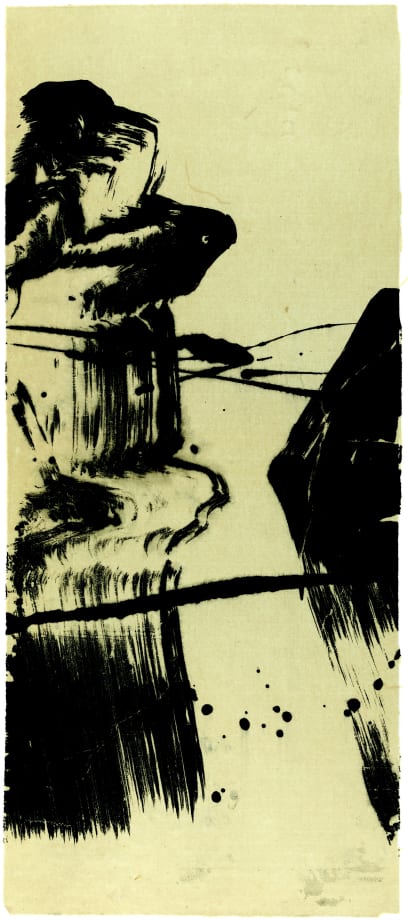In China, the Chinese influence she came looking for was not immediately accessible under the Chinese socialist rule and the recent Cultural Revolution. Chinese art schools' curriculum were developed around socialist realism and scholars versed in traditional Chinese arts, painters, calligraphers, sculptors seals, no longer meet the standards of socialist realism and were considered subversive. In order to discourage the practice of Calligraphy, it wasn't uncommon for a calligrapher to have a hand amputated. When Verdier first arrived in China, the Cultural Revolution had ended, but artists continued to stay in hiding.
In 1984 Verdier enrolled at the Sichuan Fine Arts Institute in Chongqing. She met Huang Yuan, a Sichuanese calligraphy master and landscape painter, who reluctantly became a mentor. He believed women should not practise calligraphy. There were also language problems, Huang only speaking the Sichuan dialect. However, Verdier was eventually apprenticed to Huang for 10 years, before returning to France. On her return, Verdier wrote the story of her years in China and was published in 2005 under the title "Passenger silence: ten years of initiation in China" published by Albin Michel.
Back in France, Verdier revisited western art by going to the museums and rediscovered European painters. She draws her inspirations from Flemish painters such as Rogier van der Weyden and Jan van Eyck. Based on her studies of their works, in 2013 she had an exhibition at Brugge’s Groeningemuseum, where she was the first contemporary artist to be housed in the permanent collection.
Fabienne Verdier lives and works at Vexin near Paris.
Solo Exhibitions:
2013 Groeningemuseum, Bruges, Belgium
2013 Art Plural Gallery, Singapore
2009 Galerie Jaeger Bucher, Paris
2007 Galerie Alice Pauli, Switzerland
2004 Abbaye de Silvacane, Provence, France
2003 Galerie Ariane Dandois
2001 Chapelle des Beaux-arts, Paris
1997 Pacific Cultural Founadtion, Taipei
1996 Galerie Joyce Ma, Paris
1993 Hong Kong Arts Centre
1992 Maison de la Chine, Paris
1991 French Cultural Center, Beijing
1989 Fine Arts Museum, Chongqing, China
1983 Palais des Beaux-arts, Toulouse, France
Public Collections:
Musee National d'Art Moderne, Paris
Centre National des Arts, Paris
Honda Group, Tokyo
Ministriere des Affaires Etrangeres, Paris
Chinese Ministry of Culture, Beijing
Musée Cernuschi, Paris
Foundation Hubert Looser, Zurich
Foundation Francois Pinault

